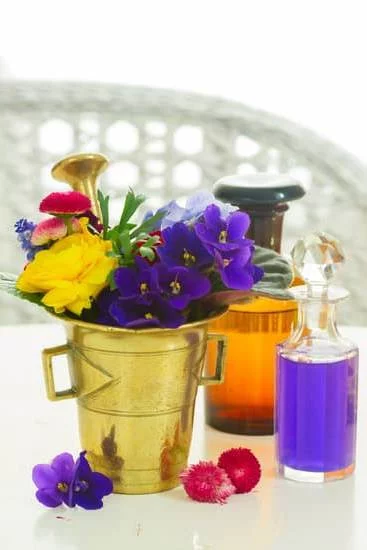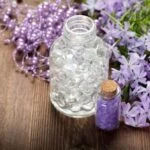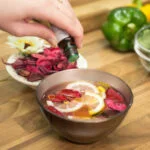Are you looking to enhance your massage experience? Learn how to use aromatherapy in massage to promote relaxation, stress relief, and emotional well-being. Aromatherapy has a rich history and proven benefits when incorporated into massage practices.
Understanding the therapeutic properties of essential oils and how to choose the right ones for different massage techniques is crucial. In this article, we will explore the various aspects of using aromatherapy in massage, from selecting essential oils to incorporating them into self-care practices.
Aromatherapy has been used for centuries as a holistic healing practice, harnessing the power of plant-based essential oils to enhance physical and emotional well-being. When combined with massage, the benefits are amplified, providing relief from muscle tension, stress reduction, and overall relaxation. With a better understanding of essential oils and their therapeutic properties, you can tailor your massage sessions to address specific client needs and preferences.
Choosing the right essential oils for different massage techniques is key to achieving the desired results. Whether you’re practicing Swedish, deep tissue, or hot stone massages, matching the right essential oils to each technique can elevate the experience for both the practitioner and the client.
Additionally, preparing essential oils for aromatherapy massage requires careful dilution and mixing with carrier oils for safe and effective use. It’s important to source high-quality essential oils that are pure and organic to ensure the best possible results.
Understanding Essential Oils and Their Therapeutic Properties
Aromatherapy relies heavily on essential oils, which are natural extracts from plants known for their therapeutic properties. These oils are obtained through various methods of extraction, such as steam distillation or cold pressing, and each type of oil possesses unique benefits and healing properties. It is crucial to understand the characteristics of different essential oils to effectively incorporate them into massage practices.
For example, lavender essential oil is renowned for its calming and relaxing effects, making it a popular choice for massages aimed at reducing stress and anxiety. On the other hand, peppermint essential oil is valued for its cooling sensation and ability to alleviate muscle pain and tension. By understanding these properties, massage therapists can tailor their aromatherapy blends to address specific client needs during a session.
It’s important to note that while some essential oils have multiple benefits, others may be more appropriate for certain massage techniques or goals. By familiarizing themselves with the therapeutic properties of essential oils, therapists can create custom blends that enhance the massage experience and promote overall well-being for their clients. Understanding how to use aromatherapy in massage involves not just selecting the right oil but also knowing how it complements different massage techniques and goals.
Choosing the Right Essential Oils for Different Massage Techniques
Essential oils play a key role in enhancing the massage experience, offering therapeutic benefits that complement different massage techniques. When it comes to incorporating aromatherapy into massage sessions, choosing the right essential oils is crucial in achieving the desired relaxation, muscle pain relief, or overall emotional well-being for the client. Understanding which essential oils work best for different massage techniques and goals is essential for a successful aromatherapy massage practice.
For a Swedish massage focused on relaxation and stress relief, lavender essential oil is an excellent choice due to its calming and soothing properties. Lavender has been long celebrated for its ability to promote relaxation and reduce anxiety, making it ideal for massages aimed at providing clients with a sense of tranquility.
On the other hand, if the goal of the massage is to invigorate and energize the client, using citrus oils such as lemon or orange can help achieve this effect. The uplifting scent of citrus oils can elevate mood and provide an energizing boost during the massage session.
When conducting a deep tissue massage that targets muscle tension and pain relief, peppermint essential oil is highly effective due to its cooling sensation and analgesic properties. Peppermint oil can help alleviate muscle soreness and inflammation, making it a valuable addition to massages focused on promoting physical well-being.
Matching the right essential oils with specific massage techniques can have a significant impact on the overall experience for both the client and therapist. Learning how to use aromatherapy in massage involves understanding these nuances and tailoring treatments accordingly.
| Essential Oil | Massage Technique |
|---|---|
| Lavender | Swedish Massage (Relaxation) |
| Citrus Oils (Lemon, Orange) | Energizing Massages |
| Peppermint | Deep Tissue Massage (Muscle Pain Relief) |
Preparing Essential Oils for Aromatherapy Massage
Diluting and Mixing Essential Oils
When preparing essential oils for use in aromatherapy massage, it is crucial to dilute them properly with a carrier oil to ensure their safe and effective application. Most essential oils are highly concentrated and can be too potent when applied directly to the skin.
The recommended dilution ratio is typically 2-3 drops of essential oil per teaspoon of carrier oil, such as sweet almond oil or coconut oil. This allows for the essential oil to be effectively spread over the skin during the massage, while also reducing the risk of irritation or allergic reactions.
Sourcing High-Quality Essential Oils
To fully enjoy the therapeutic benefits of aromatherapy in massage, it is important to use pure, organic essential oils that are free from synthetic additives or contaminants. When sourcing essential oils, look for reputable suppliers who provide detailed information about the extraction method, plant source, and purity of their products. Additionally, consider purchasing small quantities of essential oils at first to test their quality and efficacy before incorporating them into regular massage practice.
Testing for Allergies and Sensitivities
Before applying any essential oil blends during a massage session, it’s important to conduct a patch test on the client’s skin to check for potential allergies or sensitivities. Apply a small amount of diluted essential oil blend on a discreet area of the skin and observe any adverse reactions over 24 hours.
This simple step can help prevent any unwanted skin irritations or allergic responses during the massage session and ensures a safe and pleasant experience for the client.
By following these steps when preparing essential oils for aromatherapy massage, therapists can create a safe and enjoyable experience that maximizes the therapeutic benefits of both massage and aromatherapy techniques in promoting relaxation, stress relief, and emotional well-being.
Techniques for Incorporating Aromatherapy Into Massage Sessions
Incorporating aromatherapy into massage sessions can significantly enhance the overall experience for both the client and the practitioner. By carefully selecting and properly using essential oils, massage therapists can create an atmosphere of relaxation, stress relief, and emotional well-being. Moreover, these techniques can help address specific physical or emotional needs of the client, leading to a more personalized and effective treatment. Below are some practical techniques on how to incorporate aromatherapy into massage sessions.
Introducing Aromatherapy in the Treatment Room
One of the most common ways to utilize aromatherapy in massage is by diffusing essential oils in the treatment room. Using a high-quality diffuser, select essential oils that complement the desired effects of the massage session. For example, calming scents such as lavender or chamomile can be diffused for relaxation massages, while energizing blends like citrus or peppermint can be used for invigorating massages.
Adding Essential Oils to Massage Lotions and Creams
Another effective technique is incorporating essential oils into massage lotions or creams. By mixing a few drops of the chosen essential oil with unscented lotion or carrier oil before applying it to the client’s skin, you can directly deliver the therapeutic benefits of aromatherapy during the massage. This method allows for a more targeted application of essential oils, enhancing their potential impact on the client’s well-being.
Client Preferences and Sensitivities
It is crucial to consider your client’s individual preferences and sensitivities when integrating aromatherapy into massage sessions. Before commencing any treatment, discuss with your clients their likes and dislikes regarding scents and inquire about any allergies or sensitivities they may have. This will allow you to tailor your choice of essential oils to ensure a positive experience for your clients while preventing any adverse reactions.
By understanding how to use aromatherapy in massage through these techniques, practitioners can provide an elevated experience that caters to each client’s specific needs and desires. Whether creating a soothing ambiance with diffused scents or customizing an aromatherapeutic blend for topical application, incorporating essential oils into massage sessions offers a unique opportunity to enhance physical and emotional well-being.
Aromatherapy Massage for Specific Conditions and Needs
Aromatherapy has been utilized for centuries to promote physical, emotional, and mental well-being. When incorporated into massage therapy, aromatherapy can further enhance the therapeutic benefits of the massage session. In this section, we will delve into how to use aromatherapy in massage to address specific conditions and needs.
For individuals struggling with anxiety, insomnia, or muscle tension, custom aromatherapy blends combined with targeted massage techniques can provide immense relief. Lavender essential oil is well-known for its calming properties and is often used in massages to alleviate anxiety and promote relaxation.
Meanwhile, blends containing chamomile or frankincense can also be effective in providing a sense of calm and easing the mind during a massage session. Additionally, for those suffering from muscle tension or discomfort, essential oils such as eucalyptus and peppermint can be incorporated into massages to provide relief and promote healing.
Creating custom aromatherapy blends tailored to specific conditions requires an understanding of essential oil properties and their potential therapeutic effects. By carefully selecting the right combination of essential oils based on their individual properties and benefits, massage therapists can offer targeted relief and support to their clients.
In addition to addressing physical conditions, aromatherapy in massage also plays a crucial role in promoting emotional and mental well-being. The sense of smell is closely linked to emotions and mood regulation, making aromatherapy an effective tool for uplifting spirits and reducing stress levels during a massage. By incorporating uplifting essential oils like citrus or ylang-ylang into massages, therapists can create an environment that fosters positivity and emotional balance for their clients.
| Aromatherapy Blends | Specific Conditions |
|---|---|
| Lavender & Chamomile | Anxiety & Insomnia |
| Peppermint & Eucalyptus | Muscle Tension & Discomfort |
| Citrus & Ylang-Ylang | Stress Reduction & Mood Enhancement |
Benefits of Aromatherapy Massage for Emotional and Mental Well-Being
Aromatherapy has long been celebrated for its ability to promote emotional and mental well-being, making it an ideal complement to massage therapy. When used in massage, essential oils can have a powerful impact on reducing stress, improving mood, and enhancing overall mental wellness. Here are some key benefits of using aromatherapy in massage for emotional and mental well-being:
1. Stress Relief: Essential oils such as lavender, chamomile, and bergamot have been proven to have calming properties that can help alleviate stress and anxiety. When used in massage, these oils can create a soothing environment that promotes relaxation and reduces tension.
2. Mood Enhancement: Certain essential oils, like citrus scents (e.g. orange or lemon) and jasmine, have uplifting properties that can positively impact mood during a massage session. These oils can help boost energy levels, improve focus, and create a sense of positivity.
3. Mental Wellness Support: Aromatherapy has been linked to improving overall mental wellness by reducing symptoms of depression and enhancing cognitive function. When incorporated into a massage routine, essential oils can contribute to a sense of mental clarity and emotional balance.
Using aromatherapy in massage to support emotional and mental well-being involves skillful utilization of the therapeutic properties of essential oils during treatment sessions. Understanding the unique effects of different essential oils is crucial in creating an atmosphere that fosters relaxation, stress relief, and improved mood for clients undergoing massage therapy.
Overall, the incorporation of aromatherapy into massage techniques offers an opportunity to address not only the physical aspects of health but also the emotional and mental well-being of individuals seeking holistic care.
Incorporating Aromatherapy Into Self-Care and Home Massage Practices
When it comes to practicing self-care and incorporating massage into your home routine, aromatherapy can be a powerful tool for enhancing relaxation and overall well-being. By using essential oils in conjunction with massage techniques, you can create a soothing and rejuvenating atmosphere that promotes both physical and emotional health. Here are some practical tips on how to incorporate aromatherapy into your self-care and home massage practices:
1. Create a Relaxing Environment: Start by setting the mood in your home with calming scents from essential oils. You can use a diffuser to fill the air with soothing aromas like lavender, chamomile, or ylang-ylang. Alternatively, you can add a few drops of essential oil to a bowl of hot water and allow the steam to disperse the fragrance throughout the room.
2. Custom Blends for Self-Massage: When practicing self-massage at home, consider creating custom blends of essential oils to address specific needs. For example, if you’re looking to relieve tension in the muscles, opt for oils like eucalyptus or peppermint. If relaxation is your goal, try blending lavender and bergamot for a calming effect.
3. Incorporate Aromatherapy Into Bath Time: Enhance your bath time ritual by adding a few drops of your favorite essential oil to the water or mixing it with Epsom salts before adding them to your bath. Not only will this create a luxurious spa-like experience at home, but it will also allow you to benefit from the therapeutic properties of the oils as they come into contact with your skin.
By incorporating these aromatherapy practices into self-care and home massage routines, individuals have the opportunity to elevate their wellness experiences through exposure not only physically but emotionally over time also realizing overall mental wellness from an activity even as simple as this one when committed consistently over time.
Conclusion
In conclusion, the practice of aromatherapy in massage has a long-standing history and offers a wide range of benefits for both the body and mind. From stress relief and relaxation to addressing specific conditions such as anxiety or muscle tension, essential oils can have a profound impact on the overall massage experience.
By understanding the therapeutic properties of different essential oils and how to properly incorporate them into massage techniques, practitioners can elevate their clients’ well-being during each session.
When it comes to using aromatherapy in massage, it is crucial to select high-quality essential oils and to properly dilute and mix them with carrier oils for safe application. Additionally, understanding client preferences and sensitivities is key in introducing aromatherapy into massage practices. Whether diffusing oils in the treatment room or incorporating them into massage lotions and creams, the goal is to create an atmosphere that promotes relaxation, rejuvenation, and targeted relief.
As readers explore how to use aromatherapy in massage for their own self-care and home practices, they are encouraged to experiment with different essential oil blends and techniques to find what works best for them. Ultimately, embracing the power of aromatherapy in enhancing massage experiences can lead to not only physical benefits but also emotional and mental well-being. Through continued exploration and education on this topic, individuals can unlock the full potential of aromatherapy in their massage routines.
Frequently Asked Questions
How Do You Incorporate Aromatherapy Into a Massage?
Aromatherapy can be incorporated into a massage by adding a few drops of essential oils to the massage oil or lotion used during the session. The therapist can also use a diffuser to fill the room with the scent of the chosen essential oil.
How Do You Perform Aromatherapy?
Aromatherapy is performed by selecting an appropriate essential oil based on the client’s needs and preferences. The therapist can then either apply the oil topically, use a diffuser to disperse the scent, or mix it into a carrier oil for massage.
How Do You Use Essential Oils for Massage?
Essential oils can be used for massage by diluting them in a carrier oil, such as almond or coconut oil, before applying them to the client’s skin. The therapist should always consider any potential allergies or sensitivities when choosing which oils to use for the massage.

Are you looking for a natural way to improve your health and wellbeing?
If so, aromatherapy may be the answer for you.





